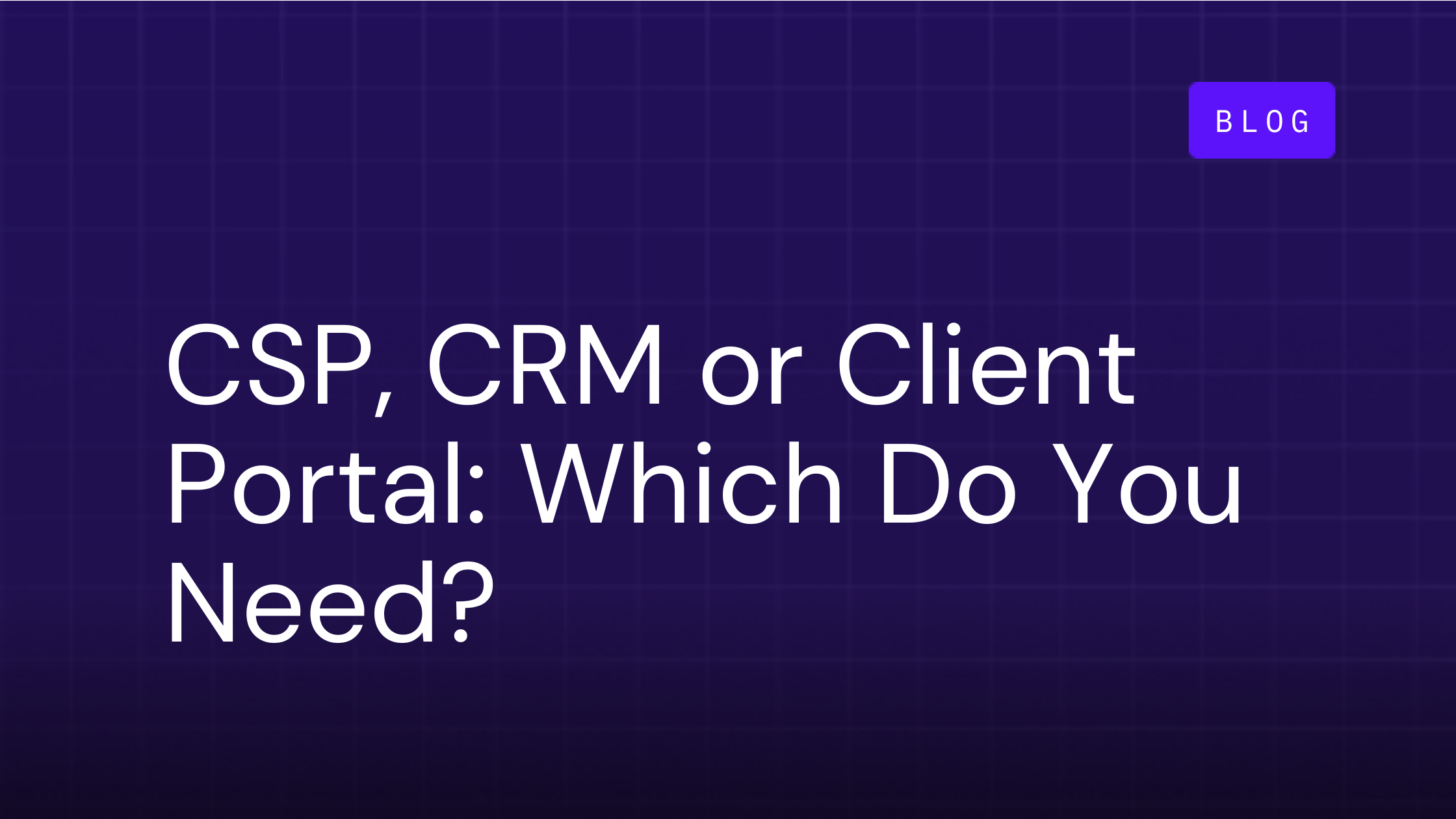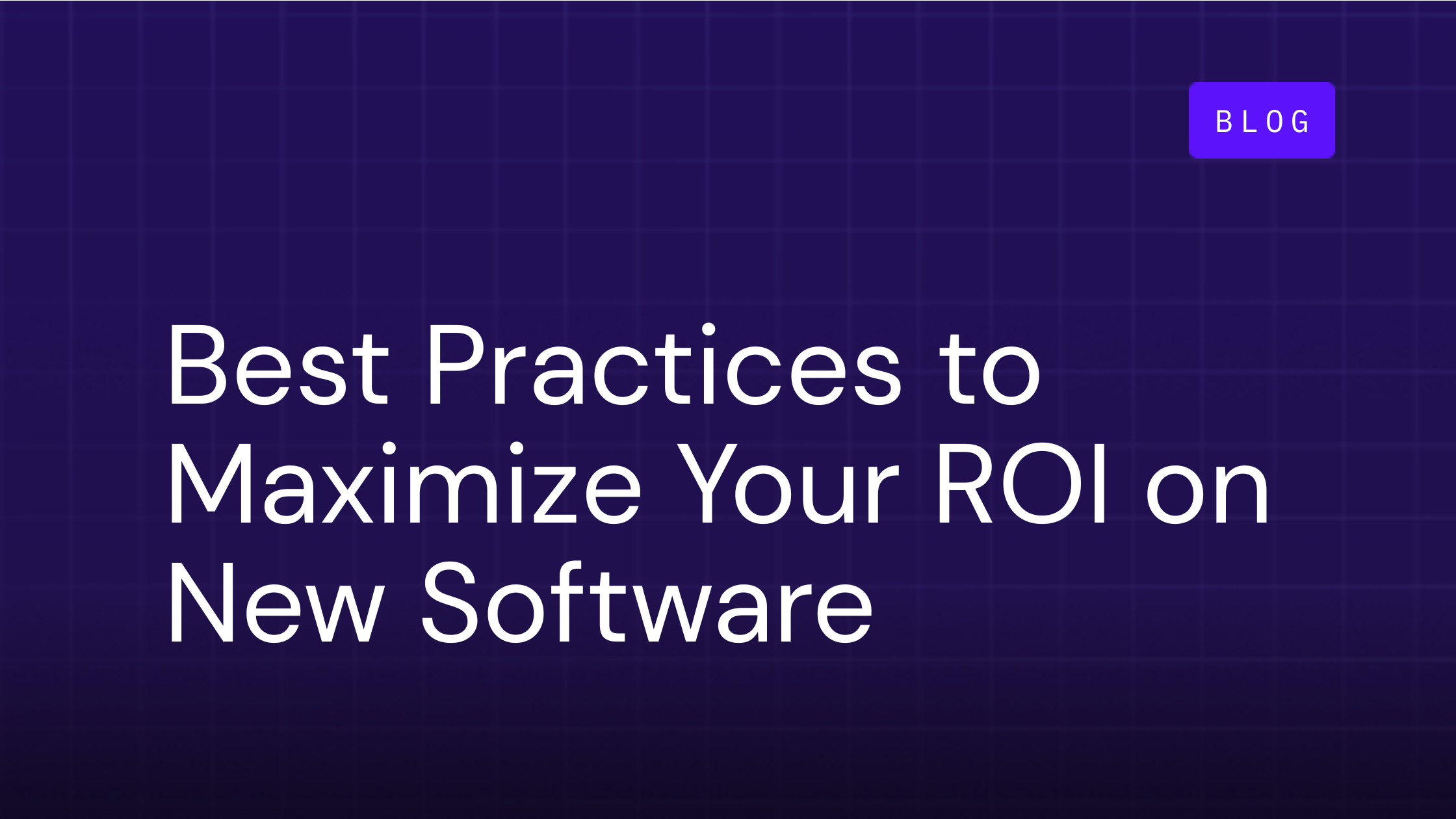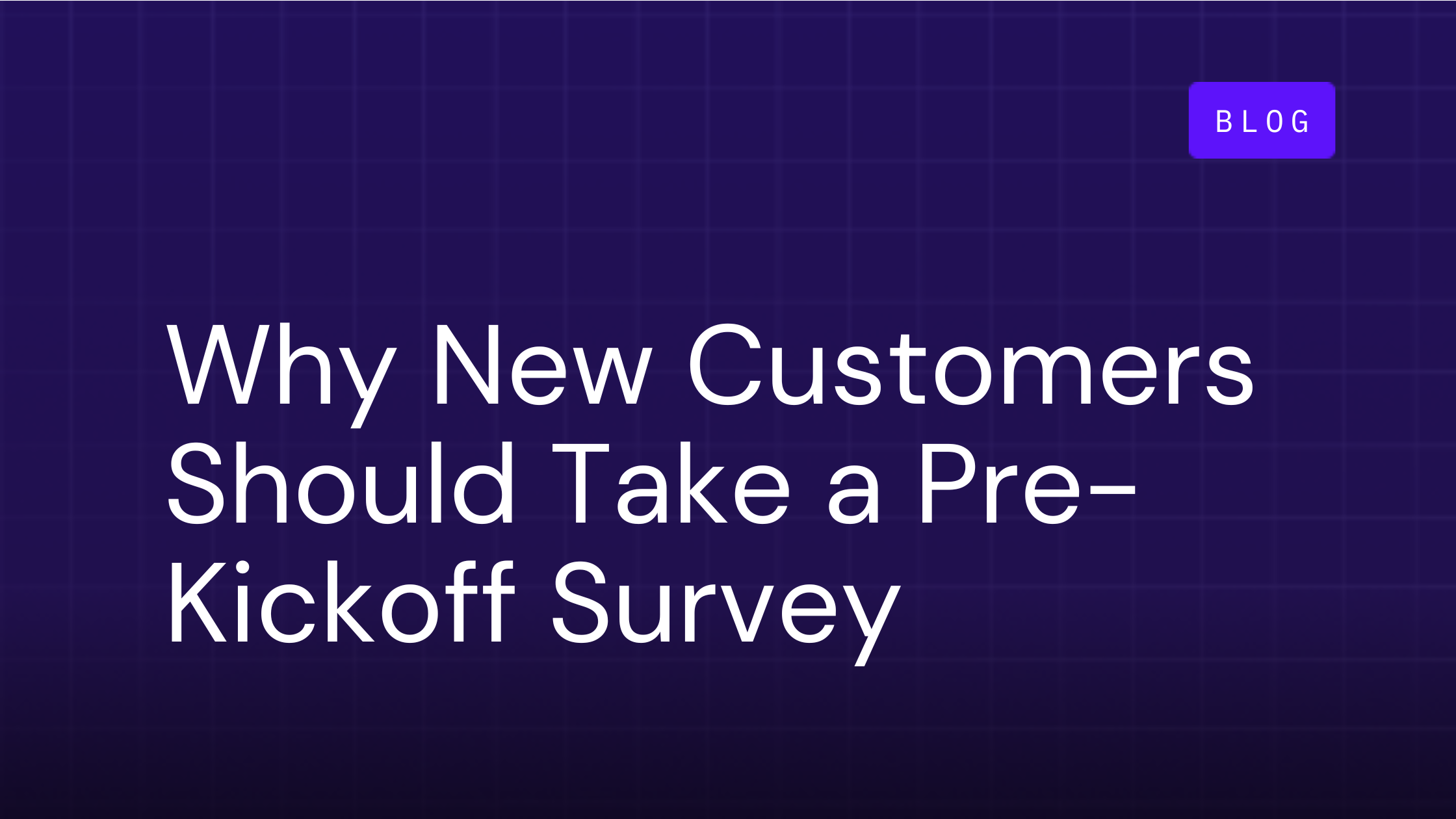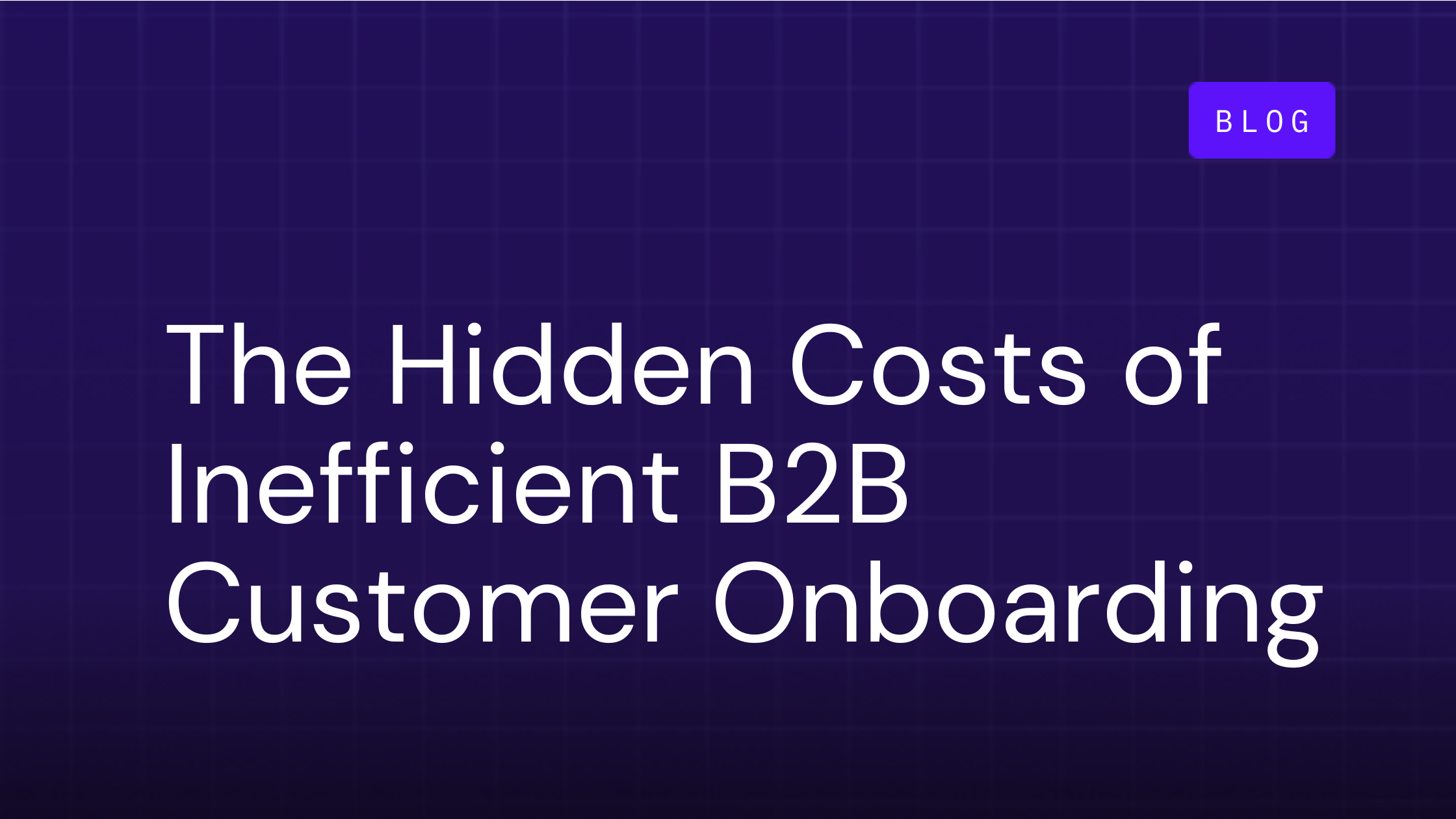Customer Success Platform, CRM or Client Portal: Which Do You Need?
Published: May 20, 2024

Table of Contents
With so many business enablement tools today, it can be tough to decide which are worth the investment. You want to have the best tools to succeed, but you don’t want to overwhelm your team or customers with unnecessary or expensive bells and whistles. Three options many companies consider are customer relationship management platforms (CRMs), customer success platforms (CSPs), and customer onboarding portals.
This guide investigates the benefits and limitations of each to help you find the best customer success software for your company's needs.
What Is Customer Success Software? Understanding Each Tool
The first step to choosing between these software options is to understand the specific use cases of each tool.
Customer Relationship Managers (CRMs)
CRMs help companies nurture stronger relationships with prospects and customers. They gather all of your data about a particular lead or customer so you can access it in a single place. Many also feature integrated tools for analysis and insight generation, which can teach you the optimal way to approach the next phase of each relationship.
Results can vary, but data suggests CRMs can increase conversion rates by up to 300%. They can also shorten your sales cycle and improve customer retention. That’s why 91% of businesses with more than 11 employees use CRM software.
However, just 50% of businesses with 10 employees or less use CRMs. This suggests you may only need this type of customer success management software if your company has emerged from its earliest stages of growth.
Customer Success Platforms (CSPs)
Customer success management platforms are designed to help you manage post-sale relationships. With a focus on engagement and retention, they unify customer information with support tickets and survey responses, among other data streams.
Of companies with 500 employees or more, 82% use CSPs like the Salesforce Customer Success Platform. However, the software is less common with smaller businesses, which often don’t need the same level of support to effectively manage post-sales relationships.
Customer Onboarding Portals
CRMs and CSPs are very similar. However, customer onboarding portals have an entirely different use case. They help new customers learn how to use the tools you sell and guide them through a step-by-step process you create.
Your onboarding portal will track data to give you deeper insights into new users’ journeys when accessing your products. You can use this data to systematically improve your onboarding process until every type of user has an ideal experience.
This can help reduce user frustration and improve the value clients get from your products. As a result, you see stronger relationships and more loyalty, which are each fantastic for your bottom line.
Key Ways Customer Onboarding Portals Differ From CRMs and CSPs
Let’s take a closer look at how customer onboarding portals stand out from the other customer success software tools you may already use or be considering. Here are three key points of differentiation for onboarding platforms.
They’re Designed for Customers
Perhaps the biggest difference between these three tools is who they’re designed for. CRMs and CSPs are primarily for internal employees. Even if they have integrated onboarding portals for customers, those haven’t been designed from the ground up with the client in mind.
Customer success onboarding software is designed to help you deliver the best onboarding experience possible — full stop. This ensures the end-user is the priority instead of your employees.
They Provide Valuable Data
Next, while CRMs and CSPs collect and organize customer data, they pull most of it from other sources. Onboarding portals record and analyze the steps customers take as they go through your new client experience to create their own data.
For example, your portal may show that new clients frequently reach out for support during a particular stage of your onboarding process. This would be a sign to redesign that step to reduce friction and create happier customers.
You might also get valuable data on the kinds of resources that new users care most about. It’s even possible to track user data on an individual basis. You could feed this into a CRM to get more actionable insights into how you should approach your relationship with that customer moving forward.
They Create Successful, Happy Customer Relationships
Finally, it’s an obvious fact that customers are happier with tools they get a lot of value from. When a customer likes your product, they naturally tend to keep using it. That’s important for businesses that expect to generate more income from the average customer beyond their initial purchase.
Onboarding portals optimize the customer’s first experience with your product or service, helping you create solid relationships. They make it easier for users to understand your tools and use them to their full potential.
How These Tools Compliment One Another
It’s important to note that you don’t have to choose one tool over another — in fact, CRMs, CSPs, and onboarding portals complement one another well.
For example, you might use a CRM to collect data about prospects who engage with your brand in some way. Once those leads become paying customers, you can use your CSP to guide your employees in managing the relationship. Meanwhile, your onboarding portal will help new customers enjoy the full value of your products faster. It will also generate data you can feed into your CRM and CSP to make more informed decisions on a customer-by-customer basis.
When you put all of these tools together, you get a robust system that converts, keeps, and onboards new customers.
Should You Use a CRM, CSP, or Onboarding Portal?
The best software for your business will depend on its size, among other factors. For example, suppose you have 10 employees or fewer. In that case, you probably wouldn’t get as much value from a CRM or CSP because it’s easier to manage relationships with a smaller customer base.
However, nearly every business that sells complex tools can benefit from having an onboarding portal. It’s always a good idea to optimize your new user experience, as doing so can help you achieve the growth you may need to make an investment in a robust CRM or CSP worthwhile.
The Bottom Line
If you think an onboarding portal is right for your business, choosing among the best customer success platforms can be difficult. OnRamp delivers the solution. Our robust, customizable platform generates powerful insights that can help you optimize every stage of your new user experience.
Related Posts:

SaaS Implementation: Best Practices to Maximize Your ROI on New Software
SaaS tools can make your entire company more efficient and profitable, but only if your team actually uses them. That’s not always...

Why New Customers Should Take a Pre-Kickoff Survey
But just diving into the implementation headfirst can hurt a lot more than it helps.

The Hidden Costs of Inefficient B2B Customer Onboarding
B2B software is only getting more powerful and, therefore, complicated. That’s why the average onboarding time for a new corporate...